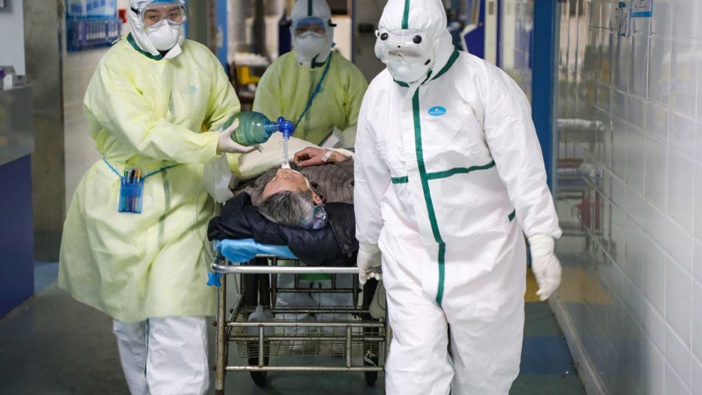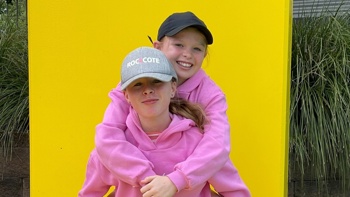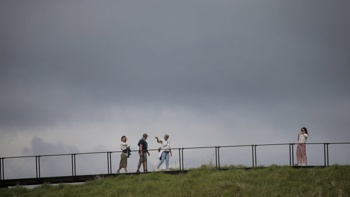An international team of experts investigating the origins of the Covid-19 pandemic say it is "extremely unlikely" the virus came from a lab — and it is likely to have originated in an animal other than bats.
Dr Peter Ben Embarek said the World Health Organisation team's findings suggest "that the laboratory incident hypothesis is extremely unlikely to explain introduction of the virus into the human population".
The team said the virus was likely circulating for several weeks before it was detected in December 2019, as they delivered a summary of their findings on Covid-19 in Wuhan on Tuesday night.
Embarek, the WHO's food safety and animal disease specialist and chairman of the investigation team, said that according to their research, an intermediary host species is "the most likely pathway [for crossover into humans] and one that will require more studies and more specific targeted research".
The panel said it was likely other animals may serve as reservoirs, including those from the feline family, given the high susceptibility of minks and cats to the virus.
Professor Liang Wannian, head of the expert Covid-19 panel at China's National Health Commission, said other possible animal reservoirs are "massively undersampled, or this research is not adequate enough".
The panel said the reservoir hosts of Sars-CoV-2 are yet to be identified and Embarek said this was a "work in progress".
He said the coronavirus samples identified in bats and pangolins are not "sufficiently similar" to Sars-CoV-2 to suggest a direct link.
Embarek said the team has tried to find what other animals at the Huanan seafood market could have introduced the coronavirus, and "a lot of work needs to be done to better understand these interesting pathways".
This includes products that were moving in and out of the market, those produced at that time and/or still available. "The market was dealing primarily with frozen animal products and mainly seafood but there were also vendors selling products from domesticated wildlife and imported products," he said.
"There is the potential to continue to follow this lead and animals that were supplied to the market in frozen and other semi-processed or raw form."
Exposure and detection
The team arrived in China on January 14 and spent two weeks in quarantine before high-profile site visits and key interviews.
They aimed to get a better understanding of the starting point of the Covid-19 outbreak and whether the timeline would change, and how the virus emerged and jumped to the human population.
"In terms of understanding what happened in the early days, did we change dramatically the picture we had beforehand? I don't think so," Embarek told the media briefing.
"Did we improve our understanding? Did we add details to our story? Absolutely."
Liang said early circulation of Sars-CoV-2, the virus that causes Covid-19 infection, was a "very important part" of their review.
He said some samples were detected "even earlier than the first case reported", indicating the "possibility of misreported calculations in other regions".
But he said it is considered "unlikely" that any substantial transmission of Sars-CoV-2 was occurring in Wuhan in October and November 2019.
Some of the early Covid-19 cases were associated with the Huanan seafood market and other cases were linked to other markets, but some had no market association at all, Liang said.
He said some of the Huanan market cases had identical genomes, suggesting they are part of a cluster.
Further research is also needed to determine the role played by cold chain food products in transmission, Liang said.
Embarek said they concluded there was no evidence "of large outbreaks that could be related to cases of Covid-19 prior to December 2019 in Wuhan or elsewhere".
He added: "We can also agree that we have found evidence of wider circulation of the virus in December. It was not only the cluster outbreak in the Huanan market but the virus was also circulated outside of the markets."
Experts snub lab theory
The team of experts visited the Wuhan Institute of Virology last Wednesday, which is at the core of unfounded theories about Covid-19, including a leak from the lab run by a scientist nicknamed the "bat woman".
Former US president Donald Trump and his supporters claimed to have evidence of an "accidental" leak and accused China of a cover-up.
The lab theory is not a hypothesis experts suggest any future studies into, Embarek said.
"We looked at the arguments for and against such a hypothesis," he said, adding that they took a rational approach to assessing the likelihood of such an event.
Embarek said "accidents do happen" and are "not impossible" but lab accidents are extremely rare.
"Nowhere previously was this particular virus researched or identified or known.
"There had been no publication, no reports of this virus."
Take your Radio, Podcasts and Music with you










